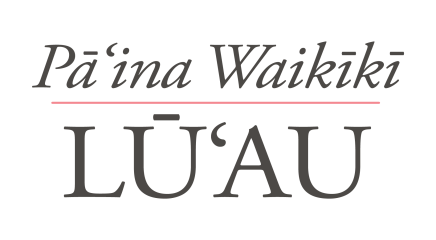Sacred Movement: Understanding Hawaiian Dancers and the Living Art of Hula at Pā’ina Waikīkī

The torches flicker as the sun dips behind Diamond Head, and the grounds of Waikīkī Beach Marriott transform. This is when Hawaiian dancers, known as hula dancers or ‘ōlapa in ancient times, step forward to share stories that have moved through generations like waves across the Pacific.
At Pā’ina Waikīkī Luau, where the vibrant stories of Waikiki’s legendary eras come to life, these dancers aren’t just performers. They’re cultural ambassadors whose every gesture carries the weight and wonder of Hawaiian history.
The Sacred Art of Hawaiian Dance
What are the Hawaiian dancers called? While many know them as hula dancers, the traditional term ‘ōlapa refers to the agile dancers of ancient times who brought the stories of the ali’i (chiefs) to life. Today’s dancers at our unique dinner party luau continue this tradition, transforming the grounds where Queen Lili’uokalani once walked into a living classroom of culture.
Here’s something surprising: the land beneath the Marriott was once part of the Helumoa coconut grove, where Hawaiian royalty gathered for their own pā’ina celebrations. Our dancers literally perform on royal grounds, continuing centuries of celebration.
Ancient Hula vs. Modern Expression
Through festive mele and the highest caliber of Polynesian performing arts, our dancers showcase two distinct forms. Hula kahiko uses traditional instruments like the ipu (gourd drum) and pahu (sharkskin drum). Every hand movement tells a story, whether it’s gentle rain on Mānoa Valley or the strength of Kamehameha’s warriors.
Hula ‘auana emerged in the 19th century, incorporating Western instruments while maintaining the storytelling heart of Hawaiian dance. At Pā’ina Waikīkī, both styles weave together to tell the stories of the elegant homes, lush natural beauty, and brilliant Hawaiian royals who shaped Waikīkī.
More Than Movement
Our Hawaiian dancers train for years in movement, language, history, and protocol. The swaying of hips represents swaying palms or rolling waves. Foot placement connects them to the ‘āina (land). Every element has meaning; every gesture carries mana (spiritual power).
What makes Pā’ina Waikīkī extraordinary is the intimate setting. Unlike mega luaus where you squint to see the stage, here you’re close enough to see emotion in each dancer’s eyes and feel the ground vibrate with each step. Our keiki guests watch mesmerized as dancers their age demonstrate that Hawaiian culture is vibrantly alive.
Your Evening of Cultural Connection
You’re not just watching Hawaiian dancers perform. You’re participating in living tradition. Our dancers invite guests to learn basic movements, teaching the story of the plumeria or the journey of Hawaiian canoes. When visitors from Tokyo or New York suddenly understand they’re telling a Hawaiian story, not just doing a dance, that’s true aloha.
Everything that makes renowned Waikīkī a unique and exciting place is celebrated at Pā’ina Waikīkī through our dancers’ artistry. From surf legends who rode waves where hotels now stand to love songs Queen Lili’uokalani composed nearby, each performance connects you to this sacred place.
Ready to experience authentic Hawaiian dancers?
Reserve your seat at Pā’ina Waikīkī Luau, where intimate gathering meets cultural immersion.
When you support authentic Hawaiian experiences like ours, you help perpetuate traditions for future generations. Every ticket helps train young dancers, preserve Hawaiian language, and ensure these stories continue flowing across Waikīkī.
Frequently Asked Questions
What are Hawaiian fire dancers called?
Fire dancers are called fire knife dancers or ailao afi performers. While this Samoan tradition appears in many Polynesian shows, at Pā’ina Waikīkī we focus on authentic Hawaiian hula, sharing the stories specific to Waikīkī’s royal grounds.
How do Hawaiian dancers learn their craft?
Traditional hula training happens in hālau hula (hula schools) under a kumu hula (master teacher). Dancers study for years, learning not just movements but Hawaiian language, chants, and cultural protocols. Our dancers at Pā’ina Waikīkī continue this rigorous tradition.
Can children participate with the Hawaiian dancers?
Yes! Our intimate setting means keiki often receive special attention from dancers, learning simple movements and Hawaiian words that bring them into the story. It’s a highlight for young guests.
